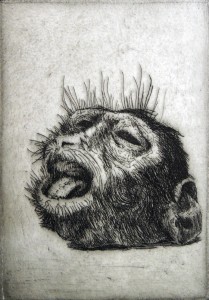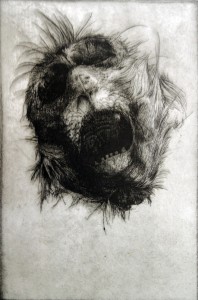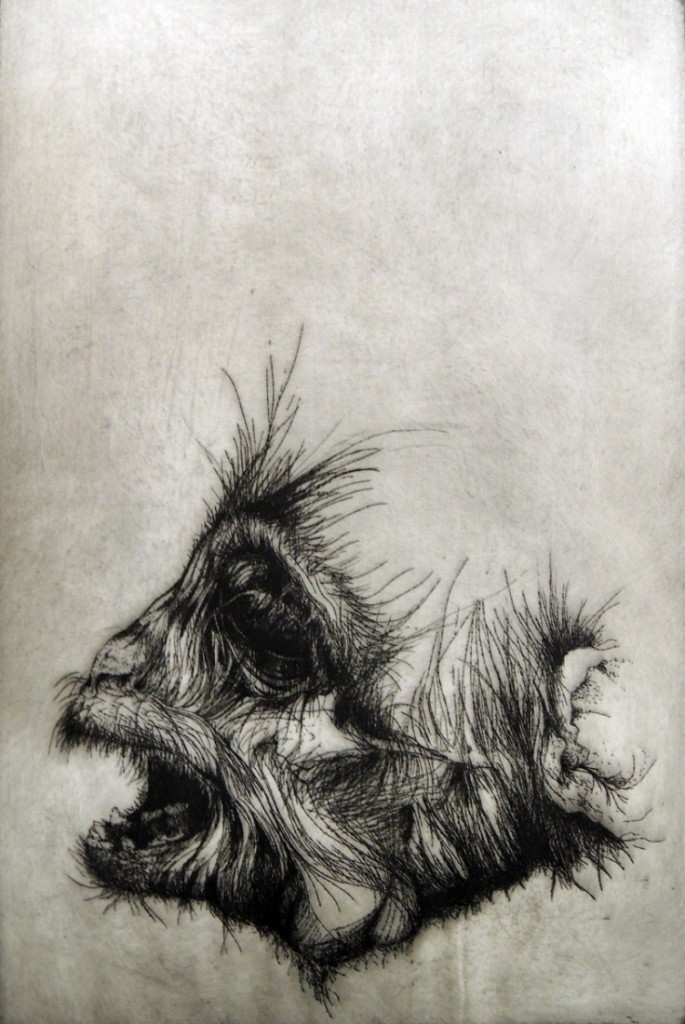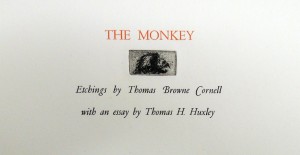

Thomas Browne Cornell, the Richard E. Steele Artist-in-Residence Emeritus at Bowdoin College and former Princeton Instructor, passed away on December 7, 2012. We hold a number of books with original prints by the artist, as well as a dozen proofs for The Monkey (Northampton, Mass.: Apiary Press, 1959). Graphic Arts Collection Oversize NE 2210.C6 M6 1959Q.
From 1969 to 1971, Cornell taught in the Visual Arts Program at Princeton University and then, transferred to Bowdoin where he established their studio arts program. While at Princeton, Cornell was one of the first instructors to teach from the newly established classrooms at 185 Nassau.
 In the Daily Princetonian Special Class of 1974 Issue, (20 June 1970), Andrew Wilson noted that, “Princeton’s Creative Arts Program is in the ascending mode, both in terms of student interest and instruction offered. Created in 1939, the Program has only come into its own in the last few years. Now, it has its own building — 185 Nassau Street, a converted elementary school — a full range of courses, and cooperative programs with the English and Art and Archaeology departments.”
In the Daily Princetonian Special Class of 1974 Issue, (20 June 1970), Andrew Wilson noted that, “Princeton’s Creative Arts Program is in the ascending mode, both in terms of student interest and instruction offered. Created in 1939, the Program has only come into its own in the last few years. Now, it has its own building — 185 Nassau Street, a converted elementary school — a full range of courses, and cooperative programs with the English and Art and Archaeology departments.”
“The Program is graced with an outstanding staff; writers-in-residence of recent years have been Phillip Portnoy’s Complaint Roth, Elizabeth Bowen, and National Book Award winner Jerzy Kosinski. This year’s writers include: one of England’s most noted men of letters, Anthony Burgess, author of The Long Day Wanes, A Clockwork Orange, and many more novels and critical works; …The Program’s staff in other fields is equally impressive. It includes artists Esteban Vicente, Lennart Anderson and Thomas Cornell.”

Although he later focused on painting, Cornell’s early work was in printmaking. According to the Bowdoin obituary, “his first publication, The Monkey, examined the process of evolution. His next publication by the Gehenna Press was The Defense of Gracchus Babeuf, including twenty-one portraits of French revolutionary figures. In the 1960’s, he established the Tragos Press, and the first editions focused on Frederick Douglass and Bayard Rustin. Responding to the Vietnam War, Cornell painted a triptych, The Dance of Death, in 1969. In the 1970s, he returned to the exploration of images of nature, using them to address modern social and environmental ethical concerns.”


